The Widerstandsnest 17 (WN17, ‘resistance nest 17’), or Höhe 61 (height 61) south of Colleville-Montgomery (at the time Colleville-sur-Orne), located 3 km inland, comprised around twenty underground concrete structures, mainly built in 1943, including two large Command Posts (Gefechtsstände) type R608: an artillery CP (1st battalion of the 1716th Art Regiment) and the other infantry, CP of the 736th Grenadier Regiment (GR 736), both equipped with armored bells.
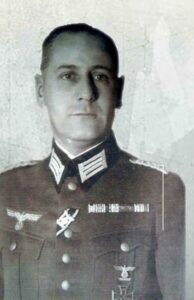
Colonel or Oberst Ludwig Krug, who commanded the 736th Grenadier Regiment and the 642nd Ost Battalion, from his underground headquarters in the heart of the Hillman position.
It was in this place that Colonel Ludwig Krug, leader of GR736, veteran of the Great War and the Eastern Front, and his “command staff” (Führungsstab) settled from February 1944, that is to say, his subordinates permanently present to assist him, including his aide-de-camp (lieutenant Hanke), his orderly (corporal J. Grass), a cartographer (Zeichner, master corporal Hans Sauer), typists ( Schreiber, including Master Corporal Heinz Krome), service men … a dozen men resided permanently in Colonel Krug’s underground bunker before June 6, 1944, in fairly rudimentary conditions.
Around the two PCs, connected by a whole network of trenches: machine gun posts (Tobruk type), shelters and housing, guard posts, ammunition bunkers, a well, a large water tank, and even a kitchen and an imposing gun garage along the road, since 1989 a memorial to the British Suffolk Regiment.
In this bunker, type R605 unfinished on D-Day, resided among others the head of the “staff company” (Stabskompanie), Captain Henry Kuhtz, veteran of the East. The entire WN17 was surrounded by 2 belts of barbed wire and minefields.
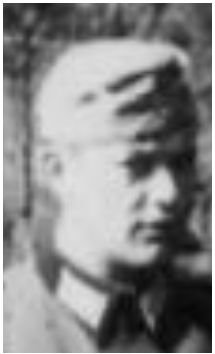
Lieutenant Hanke
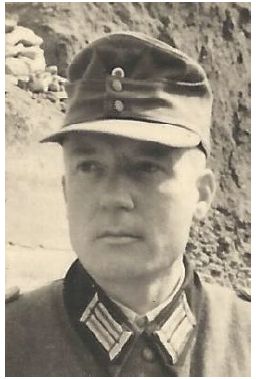
Capitaine Kuhtz
Dominating the Bay of Seine at an altitude of more than 50 meters, the WN17, named “Hillman” by the British, was poorly equipped and poorly defended, because a PC had above all information, communication, coordination and transmission. He was, among other things, connected by telephone to the PC of the 716th Infantry Division (to which the GR736 belonged), in Caen, and to the PCs of the 3 battalions constituting the regiment, that of “Point 21” (between Ouistreham and Colleville, PC of the 1st Bon), that of Cresserons (2nd Bon) and Tailleville (3rd Bon).
Colonel Krug commanded several thousand men, spread over more than 25 km of Normandy coast, from Merville-Franceville (in the east) to Asnelles (in the west): exactly where the Anglo forces will land on D-Day -Canadian women on Gold, Juno and Sword Beach!
The exact number of soldiers present at Hillman before June 6, 44 is unknown, there must have been a maximum of around a hundred men there, ranging from members of the artillery and infantry staff (like Hans Sauer or H. Krome) to soldiers assigned to the defense of the site, such as Chief Warrant Officer W. Lich, a veteran of the East, who destroyed an English tank during the D-Day fighting. There was also a cook, the colonel’s driver, liaison officers (Melder) etc. But on D-Day, after the morning coastal fighting on Sword Beach, dozens of survivors retreated to Hillman, greatly increasing the garrison. During the afternoon battles against the English infantrymen of Suffolk and the tanks of the Hussars, despite strong resistance in the eastern part of Hillman, the Germans were forced to gradually withdraw, and by evening those who did not had not been killed or captured retreated into the colonel’s regimental headquarters, in all around 70 soldiers, exhausted, in a bunker designed for around fifteen men! It was the same in the artillery CP.
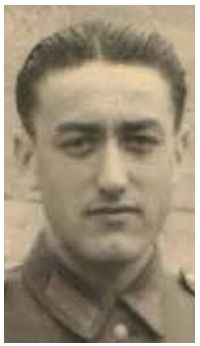
Hans Sauer
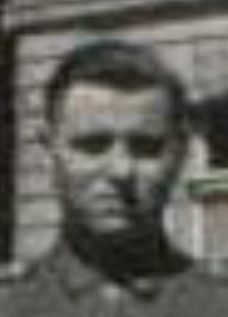
Hans Krome
Without a clear vision of the situation, without water, food or ammunition, abandoned by his superiors, Colonel Krug resigned himself to laying down his arms on the morning of June 7, sparing the lives of dozens of his men, many of whom, at the image of soldiers of the 716th Div. of Infantry, were between 30 and 40 years old, already fathers of families, reluctant to die for Hitler. The Battle for Hillman ultimately ended “humanely”, but cost the lives of several German soldiers, including Second Lieutenant K. Schoenemeier, who fell at the ‘east’ guard post.

